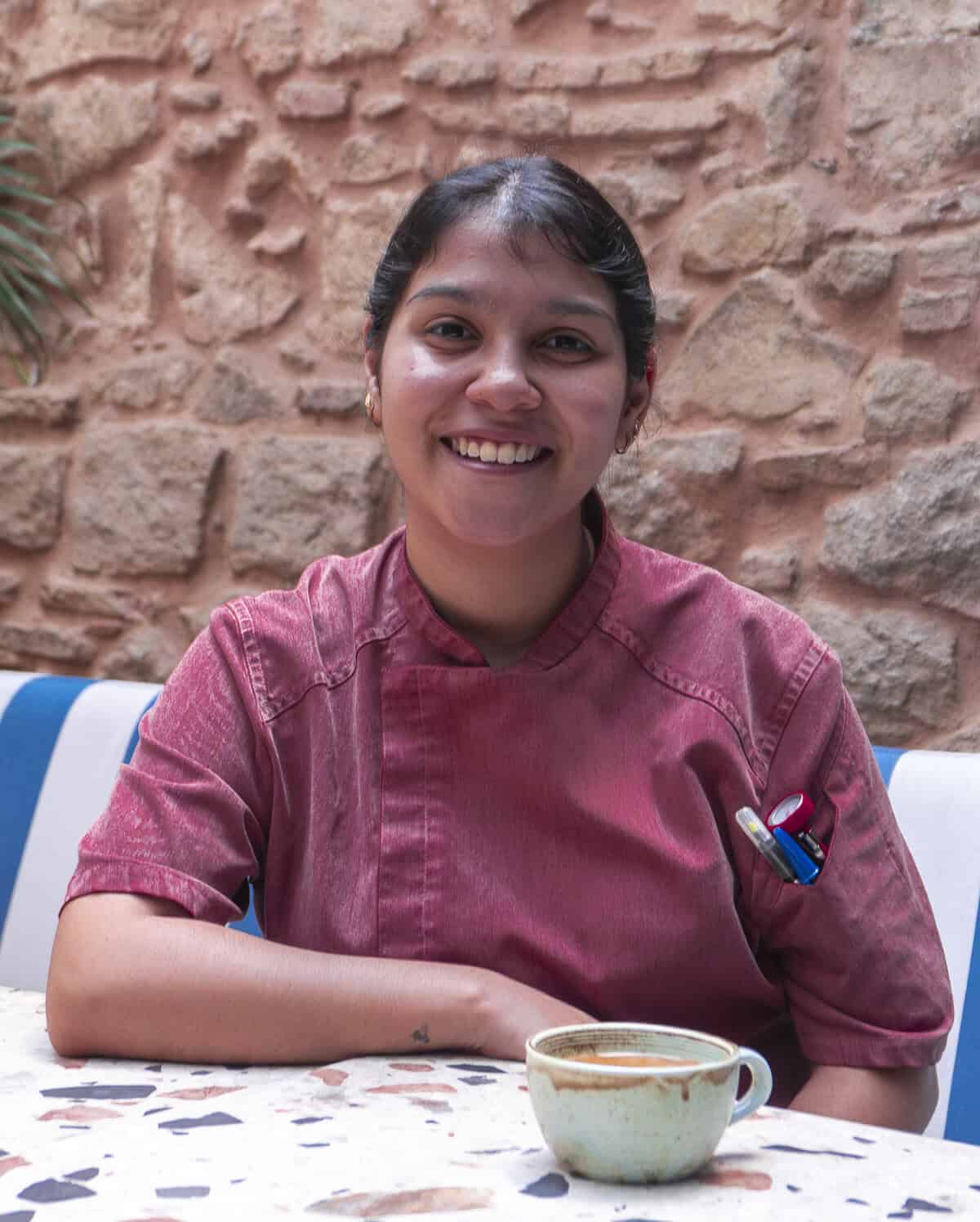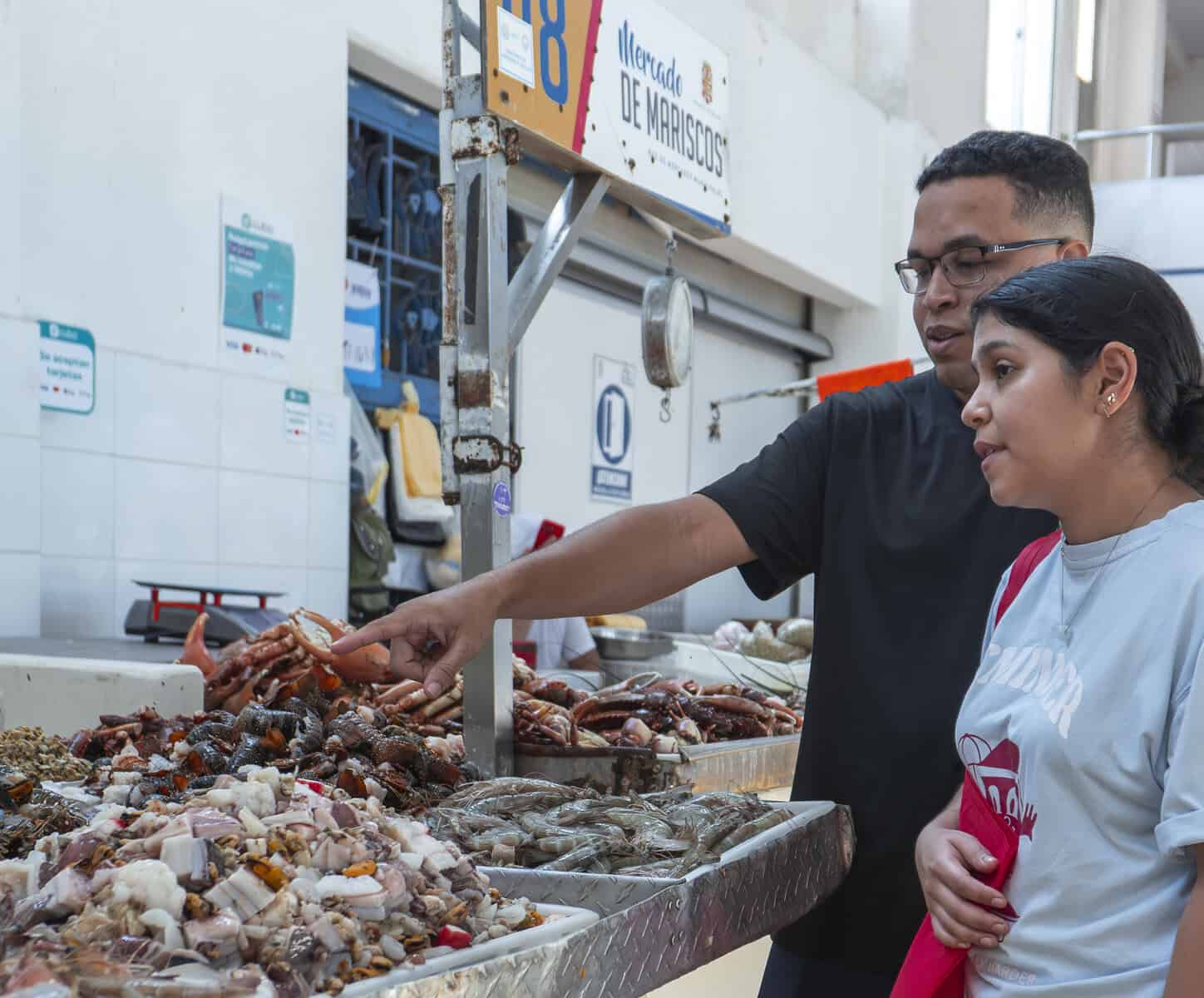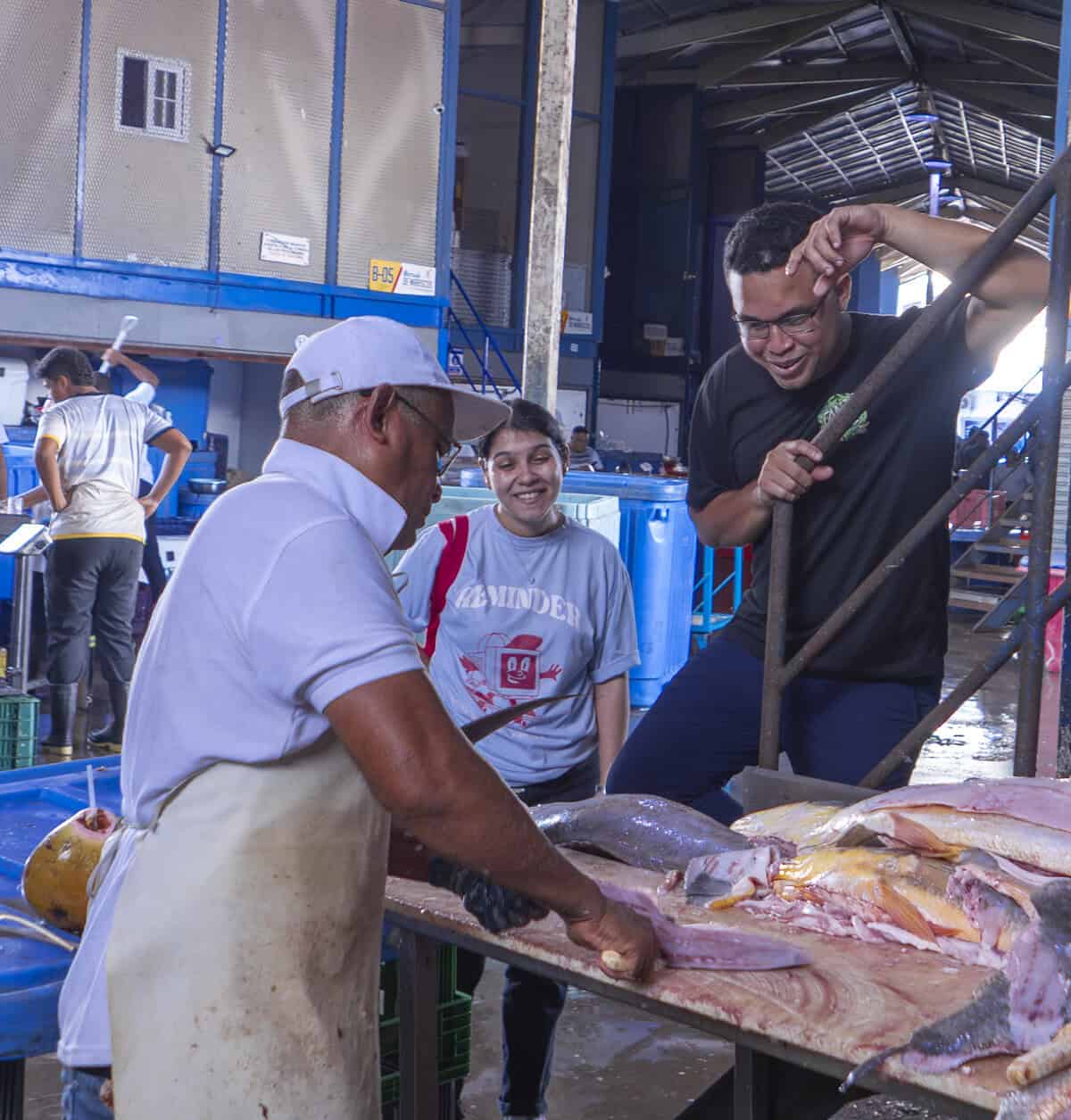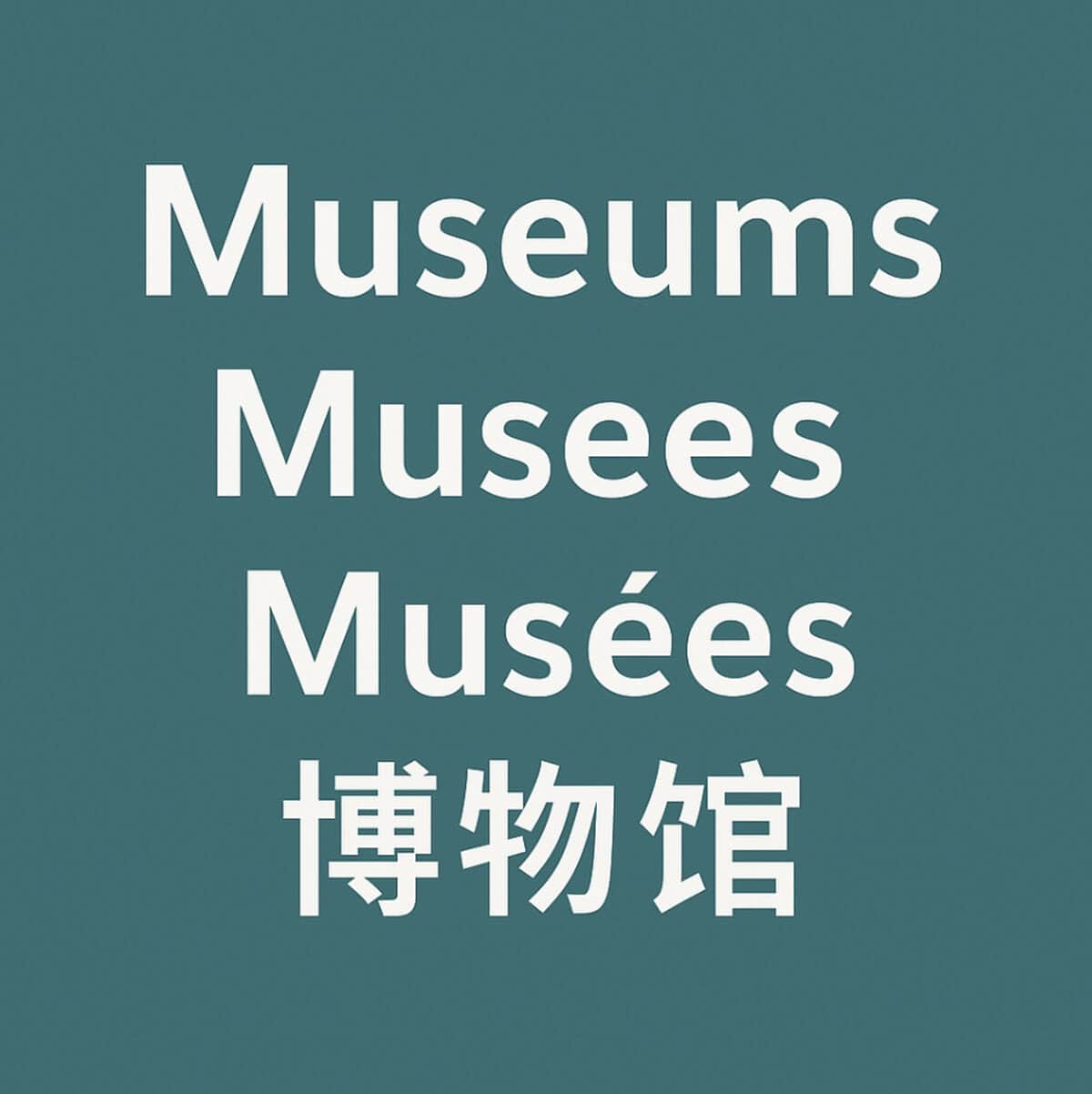Panama’s Youngest Chefs to Watch Ericka Rodríguez & Carlos H. Smith at BRUMA Seafood Restaurant
When BRUMA first opened in Casco Viejo also known as San Felipe, I went on opening night not as a critic, but as someone who’s seen more openings than champagne corks. The room had that electric, nervous hum only a new restaurant gives off—polished glasses, anxious smiles, and a rhythm that hadn’t quite settled yet. But something about it felt different. You could sense promise before the first plate arrived the quiet confidence that this would become the home of Panama’s Youngest Chefs.
Everybody knew it was going to be a success this was Brittany Morgan’s fourth restaurant opening in Casco Viejo, and that confidence quietly filled the room before the first toast was made. What no one realized that night was that Panama’s youngest chefs would soon turn this new restaurant into one of the city’s most promising kitchens. – Learn more about Bruma Seafood Restaurant in Casco Viejo
A few days later, Leanne & I went back for lunch. That’s when BRUMA began to show its heartbeat. Not from the décor or the seafood itself though both were outstanding but from the feel of the kitchen. There was calm focus, unspoken teamwork, and a sense of pride that can’t be faked.
Since then, Leanne and I have eaten there at least twice a week, sometimes for lunch, sometimes for dinner. You learn a lot about a restaurant from its ordinary days. And across months of meals, I watched two young chefs Chef Ericka Rodríguez and Sous Chef Carlos H. Smith run that kitchen with rare purpose.




Of to the Market with Panama’s Youngest Chefs
Ten months later, I’d seen enough to know these two weren’t a passing trend. Their consistency, their quiet creativity it just kept building. Going to Bruma had become an event in itself, each visit a little sharper than the last. I finally asked if I could spend a day with them, follow them to the seafood and vegetable markets, just to see where it all begins. They looked at each other, smiled, and said, “Okay.” That was the moment I knew I’d get to see what really holds BRUMA together the part most guests never see.
The Market Morning with Panama’s Youngest Chefs
The seafood market in Panama City is its own kind of orchestra fishmongers calling out prices, knives striking boards, gulls circling above the roofline. When I followed Panama’s Youngest Chefs, Ericka and Carlos, through the aisles, I wasn’t watching chefs collect ingredients. I was watching artists gather color and tempo.
We started near the front stalls where corvina, snapper, and sea bass lay glinting under crushed ice. Mounds of shrimp, squid, and soft-shell crab were stacked in foam boxes. Ericka moved with quiet certainty, lifting each fish, running her fingers along the skin, and inhaling gently.
“It’s not just about clear eyes,” she said, turning a snapper toward the light. “You can feel the story in the texture. Fresh fish smells like the tide clean, not sharp.”
A few steps away, Carlos was negotiating for langoustines. He examined the shells, weighed one in his hand. “This tells you everything about the sea today,” he said. His manner was clinical but kind part scientist, part craftsman.
But that was only the market the public sees the bright, open section where locals buy dinner for their families and tourists snap photos for Instagram. Then Ericka turned to me and said, “Let’s go.” “Where?” I asked. “Now we go where the restaurants buy,” she smiled.
We stepped out, took a sharp left, and entered a different world the trade floor. High ceilings, wet floors, and the steady rush of water. Rows of tables where fishmongers were cleaning, scaling, and shouting orders. Chefs in aprons stood shoulder to shoulder, negotiating for the week’s catch. Ericka pointed ahead. “There,” she said. “I’ve known a few of these guys for years. Back when I was working at AtoZ, I used to come here every morning.”
We moved carefully, the floor slick beneath our feet, the air filled with salt and sawdust. I had the time of my life watching Panama’s Youngest Chefs at work. They picked up fish, studied the gills, judged the color, and quietly calculated how many portions they could get from each before committing to buy. It wasn’t just shopping—it was choreography.
Watching them, I realized how much knowledge and instinct these two carry for their age. They’ve grown up in this rhythm. And as I stood there surrounded by noise, water, and the pulse of real craft I couldn’t help but think: where will these two chefs be ten years from now?






The Walk to the Fruit and Vegetable Market A Lesson from Panama’s Youngest Chefs
It was a short walk from the fish market five minutes at most through the edges of Chinatown. As we turned the corner into the plaza, the noise softened and a different kind of energy took over. We all looked up and saw the sign. “Here we are,” they said, grinning. Their smiles said everything.
Inside, the fruit and vegetable market was immaculate bright, organized, almost cinematic. The colors hit you first: the deep greens, the flash of red peppers, the yellow of ripe mangoes stacked in pyramids. Panama’s Youngest Chefs, Ericka and Carlos, moved like they owned the place relaxed but focused. They knew the vendors, the rhythm, the shortcuts.
We passed a few food stalls, and Carlos nudged me. “James, you know this is some of the best food in Panama, right here,” he said, half-joking but dead serious. We stopped at the juice stand at the far end. Ericka smiled and said, “Let me buy you a juice.” “No,” I said, “let me buy you two.”
The vendor blended fresh fruit and vegetables right in front of us no sugar, no syrups, no ice just produce, pure and alive. It tasted like the city itself: humid, honest, and full of life. Then Ericka said, “Let’s go shopping.”
The air changed sweet, green, and alive. This is where Casco Viejo’s restaurants draw their inspiration from freshness that can’t be faked. Stalls overflowed with guava, basil, and mango, their scent rising in the humid air. Ericka reached for limes. “This is where my menus begin,” she said. “I think in citrus it’s how I wake up a dish.”
We filled baskets with avocados still warm from the sun, small finger bananas, baby potatoes with flecks of soil, and papayas split to reveal coral-colored flesh. There were rows of chili peppers in reds and golds, bunches of cilantro, mint, and oregano, and crates of fresh coconuts waiting to be cracked open.
A vendor pressed coconut water into a bag and sealed it with a wire twist. Carlos pointed to him and smiled. “That’s flavor for a whole day.” Watching them choose, weigh, and discuss every detail, it became clear: BRUMA doesn’t start in the kitchen. It starts right here—in the market’s noise, color, and heat—where intuition meets responsibility.
As I followed them through the aisles, I couldn’t help thinking about all the food delivery trucks that pull into Casco Viejo each morning boxes of pre-cut produce, processed sauces, and convenience dressed up as craft. But Panama’s Youngest Chefs don’t buy off the back of a truck. They walk these markets once or twice a week, sleeves rolled up, hands on every ingredient. That’s not convenience. That’s conviction.
This wasn’t shopping. It was communion. And it reminded me this is the difference between a cook and a chef. Passion makes you walk.






About Chef Ericka Rodríguez, The Citrus Heart of BRUMA
Ericka is 25. Calm, deliberate, and already certain of her path. We sat after the lunch rush, the dining room with soft music in the background.
“When did you know you wanted to be a chef?” I asked. She smiled. “In second grade. I had a school project, and my mum helped me cook. We made party platters and desserts all color and fun. That’s when I knew I wanted to be in the kitchen.”
After high school, she joined the Bern Hotels Culinary Program, where she studied world cuisines and kitchen management. “We learned a lot because Panama’s guests come from everywhere,” she said.
When I asked who inspired her, she answered instantly: Ina Garten. “I love how she made elegant food feel like home. Her idea of comfort food made better that’s what I want people to feel when they eat my food.”
Her early career shaped her discipline. She started at the Miramar Hotel, where she learned pressure, precision, and timing. Then came a defining chapter at Riesen, Panama’s pioneering sustainable restaurant. “At Riesen, nothing goes to waste,” she said. “You learn to write recipes knowing where every trimming goes. It’s about respect—for the product and the planet.”
Next came AtoZ, a 100% restaurant built on Michelin-level precision. “My chef there had trained under Thomas Keller,” she said. “That experience showed me sustainability and technique can live side by side.” I asked what ingredient defines her. “Citrus,” she said instantly. “Lime and orange. Acidity gives a dish its heartbeat.”
When I asked what reminds her of home, she didn’t hesitate. “Coffee and cinnamon,” she said. “My grandparents’ house always smelled like that.” There was always the aroma of coffee in the background freshly brewed, earthy, comforting. My grandparents loved coffee; it was more than a drink, it was a ritual. And alongside it, the smell of cinnamon drifted through the house as they baked. That mix of coffee and spice was part of every day, every celebration, every quiet afternoon. It was their pastime, their rhythm—and it’s a scent that still follows me, a reminder of warmth, family, and where it all began.
And what does cooking in Casco Viejo mean to her? She looked out the window. “Casco inspires you every day. The people here care about food. You see the culture, smell the coffee it keeps you grounded.” You can experience that same aroma in our Casco Viejo coffee shops, where stories like Ericka’s began.
“What kind of chef do you want to become?” I asked. “I just want to be me,” she said. “One day, maybe I’ll open a small place. Thirty seats. Everything fresh and colorful. You walk in, and it feels like family.”
Before I left, she told me about a guest who once called her over to a table. “I thought something was wrong,” she said. “But she told me my dish reminded her of her childhood. she cried. I cried. That’s the best compliment I’ve ever had.”
If Ericka ever opens that small café, I can already imagine it: baskets of sourdough, local cheeses, honey, and fruit. The kind of place where you don’t just eat you feel remembered.
About Chef Carlos H. Smith, The Discipline of Fire
Carlos’s path to the kitchen was anything but typical. “I was going to be a chemical engineer,” he said. “I had a scholarship and everything. But the first day at university, I switched to culinary.”
He laughed when he said it, but his eyes told the story. “It shocked my parents, but I knew I couldn’t spend my life behind a desk. I needed to build something real.”
His first job was at Athanasiou, the legendary coffee and bakery chain. “I started on the breakfast line,” he said. “Eggs, toasts, fast rhythm. It taught me timing.”
Then came the Hotel Riu, where he learned the scale of production. “Banquets. Pressure. Hundreds of covers. That’s where I learned that organization beats creativity. You can’t improvise if you’re not in control.”
A few years later, the call came from Miato Restaurant one of Latin America’s Top 50 Best Restaurants. “I’d applied months before and forgotten. Two months later, they called. I thought I’d missed my chance. But once I got there, it changed everything.”
He spent three months on the line sauces, sides, plating learning discipline and focus. “That kitchen ran like a clock,” he said. “And it made me sharper.”
After Maito came Chevre Panama, an upscale restaurant centered on handmade pasta and fine cheeses. “That’s where I fell in love with the details,” he said. Ericka looked surprised. “I didn’t know you had a background in pasta,” she said, smiling. “Now we can really build on this.” She was genuinely delighted pasta has always been her quiet obsession. She loves getting behind the machine, rolling it out by hand, shaping and cutting each piece fresh. Now, realizing Carlos shares that same passion, she could already see the possibilities forming. There’s a new energy at Bruma one that feels like the start of something extraordinary.
Carlos’s influences range from Anthony Bourdain to Spain’s Dabiz Muñoz of DiverXO. “Bourdain taught me that respect builds better kitchens,” he said. “And Muñoz reminded me that creativity needs courage.”
“What’s your favorite ingredient?” I asked. “Cilantro,” he said. “It’s Panama’s fingerprint fresh and honest.” When I asked what reminds him of home, he didn’t hesitate. “Coconut milk,” he said. “It’s Afro-Caribbean comfort. It makes any kitchen feel like family.” He grew up in an Afro-descendant community where dishes built on coconut milk were part of daily life rich, fragrant, and tied to memory. Those flavors still take him back to childhood, to kitchens filled with music, laughter, and the steady rhythm of the Caribbean coast
.He’s not chasing stardom. His dream is simple: “A casual place, good food, cold beer, friends. A space people feel part of.” That’s Carlos humble, thoughtful, grounded. His strength isn’t in shouting or showmanship. It’s in quiet excellence.
The New Voice of Panamanian Cuisine
Watching Panama’s Youngest Chefs, Ericka and Carlos, at work is watching Panama’s culinary future take shape. She leads with warmth and intuition; he anchors it with structure and calm. Together, they’ve built a rhythm that feels both fresh and timeless.
Their generation doesn’t see sustainability as marketing it’s the only way to cook. They value local farms, respect the market vendors, and honor the byproducts most kitchens ignore. Their plates speak not of luxury, but of balance, memory, and pride.
At BRUMA, that philosophy is visible in every service, every citrus note, every perfectly seared fish. It’s why this restaurant and these two chefs matter. They’re not chasing trends. They’re defining what Panama tastes like now. See more of what makes Casco Viejo restaurants stand out among Panama’s dining destinations..
And let’s remember Bruma itself is young, just like its chefs. Over the last ten months, I’ve watched their progression and creativity evolve with every plate. You can feel it building, course by course. There’s so much more to come.
Fast Facts
- Restaurant: BRUMA Seafood Restaurant, Casco Viejo, Panama City
- Chefs: Ericka Rodríguez (Executive Chef) & Carlos H. Smith (Sous Chef)
- Cuisine: Sustainable seafood, local produce, handmade pasta, and Panamanian creativity
- Atmosphere: Contemporary yet grounded, built on discipline and emotion
- Signature Strengths: Market-to-table sourcing, citrus-forward flavors, and a kitchen culture defined by respect
Q&A
A: Its authenticity. Every dish comes from a real place, a real story, a real hand.
A: Bright, balanced, and personal flavors that feel like home.
A: Precise, structured, and quietly powerful.
A: Because you’re tasting the next decade of Panamanian cuisine right now, at its start.
Closing notes:
I can’t tell you how excited I was to learn I’d be spending the day with these two up-and-coming chefs. I knew it would be fun gathering the story for this blog after all, it’s part of my work with CascoViejo360.com but for me, it goes deeper than that.
I’ve spent my life in hotels and restaurants. I’ve worked with some of the greats. And it’s rare, after all those years, to walk away feeling that the next generation might do it better. Watching Ericka and Carlos reminded me that the culinary world isn’t fading it’s finding its footing again.
For too long, we’ve watched the big processing trucks back up to kitchen doors, unloading convenience in cardboard boxes. But not here. Not in Panama. Over the last year and a half, I’ve started to see something shift. The young chefs are saying no more. They’re going back to the markets, back to the growers, back to the sea. They know this country doesn’t need to import its soul it grows here.
What I see now is a generation that understands craft, that values sustainability, and that treats responsibility not as a slogan but as a standard. Panama’s Youngest Chefs are leading that charge protecting what we have, nurturing what’s next, and shaping a better plate and a better place for the generations that will follow.
👨🍳 Thanks for taking a moment to explore the next generation shaping Panama’s kitchens. These young chefs are redefining what authenticity and creativity taste like, showing how passion, discipline, and local roots can quietly reshape a nation’s culinary story.
- Return to the homepage for more stories and local insights
- Read more community features in Out and About with James
- Discover the places where these chefs find inspiration — explore our Casco Viejo restaurants
🌿 Every dish tells a story — of land, sea, and the hands that bring them together. These young chefs remind us that Panama’s truest luxury is flavor born from integrity.
🧭 Out and about with James.
Museum of the Mola
A vibrant museum dedicated to Guna culture, where the meaning behind each stitch tells a story of identity and heritage.
Visit MuseumArts & Culture
From street murals to studio exhibits, Casco’s art scene is alive with talent and passion rooted in history and place.
Explore ArtsEvents in Casco
Stay in the loop with local events—gallery openings, live music, artisan fairs, and street festivals that bring Casco to life.
View Events
